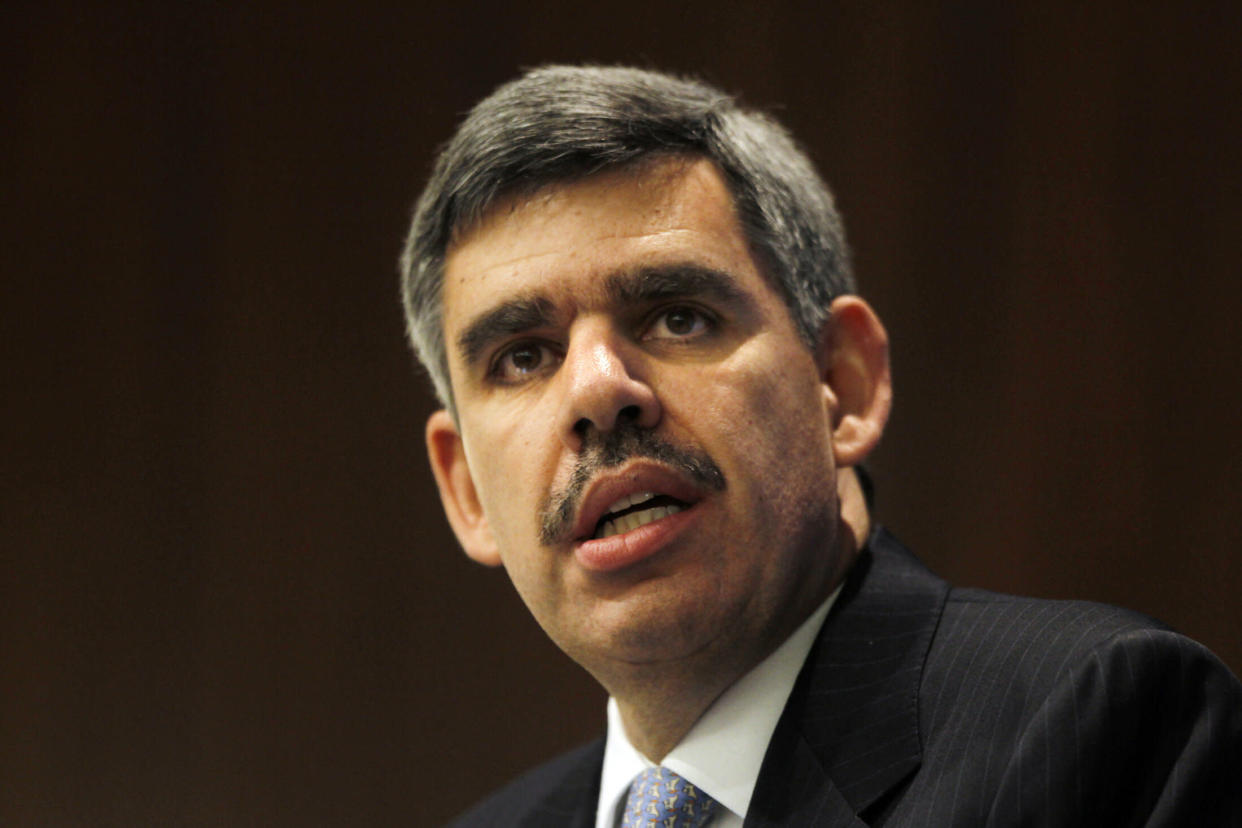El-Erian: These three companies are driving inflation down

Signals of persistently low inflation have puzzled economists in the years since the Federal Reserve first adopted its 2% inflation target after the financial crisis. According to Mohamed El-Erian, some of today’s largest technological forces may be to blame.
“The reason why we’re having no inflation is basically the combination of Amazon, Google and Uber,” El-Erian said in an address at the Mortgage Bankers Association Secondary Market Conference in New York City on Monday. “Amazon means that we can disintermediate expenses, and it takes pricing power away from most people. Google means that you and I can search, and the cost of search is very low – so again, you’re taking pricing power away.”
“Uber brings onto the marketplace existing assets, so you increase supply, which brings prices down,” he said. “These three effects are incredibly powerful.”
‘Complete change’
El-Erian has served as chief economic advisor at Allianz, the parent company of Pimco, since 2014. During his more than 6 years as CEO of Pimco, he helped grow assets under management to as high as $2 trillion. He also previously headed a team of advisors instructing President Barack Obama on global development.
El-Erian’s comments come as inflationary signals in recent months have continued to hold below the Federal Reserve’s 2% target. The Fed’s preferred measure of inflation – or the “core” personal consumption expenditures index that excludes the volatile categories of food and energy – decelerated to a rate of 1.6% year-over-year in March, marking the slowest pace since January 2018.
Meanwhile, the unemployment rate fell to a 49-year low in April. Unemployment and inflation are typically thought to be inversely correlated, with a low unemployment rate generally corresponding with higher levels of inflation. But this phenomenon, known to economists as the Phillips curve, has not been present as of late.
“Basic economic relationships are breaking down,” El-Erian said. He admitted that if he had been asked several years ago where inflation levels would be if unemployment and vacancies were at current levels, he too would have predicted wages – and inflation – would be going up. “There is a complete change in the underlying relationship, which means that the models are no longer as accurate as they used to be.”
In a press conference after the Federal Reserve’s most recent policy meeting, Chairman Jerome Powell attributed factors contributing to lower inflation as “transitory,” citing a decline in financial service fees after the stock market’s fourth-quarter slide, along with health-care costs.
However, El-Erian said it remains uncertain whether new technologies’ impacts on consumer prices will be short-lived or a lasting phenomenon.
“The marketplace assumes that they are repeated every year. And if they are, then [interest] rates aren’t going anywhere,” El-Erian said. “But if it turns out they’re once and for all, then inflation comes back and rates start going higher.”
El-Erian said he believes the Fed will be on pause this year, neither hiking nor cutting interest rates – an outcome the central bank had signaled in March. As of Monday morning, CME Group’s closely watched Fed Funds Futures tool showed markets pricing in an about 75% probability that the central bank would cut rates at least once by its December meeting — a likelihood El-Erian said was “way too high.”
Emily McCormick is a reporter for Yahoo Finance. Follow her on Twitter: @emily_mcck
Read more from Emily:
Tech companies like Lyft want your money – not ‘your opinion’
Levi Strauss shares jump more than 30% above IPO price at open
Facebook sued by Trump administration for alleged ‘discriminatory’ ad practices
Boeing 737 Max groundings ‘pressure’ U.S. economic data: Wells Fargo
Follow Yahoo Finance on Twitter, Facebook, Instagram, Flipboard, LinkedIn, and reddit.

